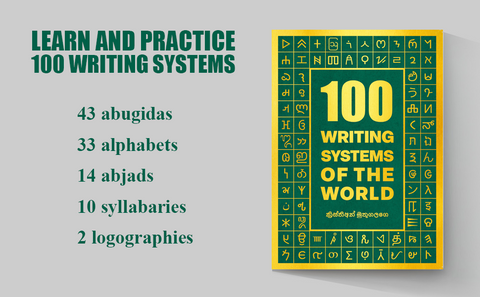The Arabic Script: A Linguistic Marvel with Rich Historical Roots
When it comes to writing systems, few can match the elegance and historical significance of the Arabic script. Evolving over centuries, this script has left an indelible mark on the cultural and linguistic landscape of a vast region. Let's delve into the fascinating world of the Arabic script and explore its intriguing features and captivating history.
1. Script Type: The Arabic script belongs to the family of abjads, a type of writing system where each letter represents a consonant sound. Vowels are indicated using diacritical marks, allowing for flexibility in pronunciation.
2. Writing Direction: Arabic is written from right to left, a unique characteristic shared by other right-to-left scripts. This distinctive directionality gives Arabic text a visual appeal and a sense of aesthetic charm.
3. Invention Time: The origins of the Arabic script can be traced back to the 4th century CE, when it emerged in the Arabian Peninsula. It developed from earlier scripts such as the Nabatean and Aramaic, incorporating distinct features along the way.
4. Population Actively Using: Today, millions of people actively use the Arabic script for reading, writing, and communication. It is the writing system of choice for over 400 million native speakers of Arabic, as well as for numerous non-Arabic languages spoken in the region.
5. Usage Area: The Arabic script is primarily associated with the Arabic language, which spans across the Middle East and North Africa. However, it is also used for writing other languages like Persian, Urdu, Kurdish, Pashto, and many more. Its influence extends beyond linguistic borders.
6. Languages Associated with the Script: Alongside Arabic, the Arabic script is used for writing various Semitic languages, such as Hebrew, Amharic, and Tigrinya. Additionally, it has been adapted to write non-Semitic languages like Farsi, Urdu, and Malay, attesting to its versatility and adaptability.
7. Interesting Historical Facts: The Arabic script played a significant role in the preservation and dissemination of knowledge during the Islamic Golden Age. It served as a vehicle for the transmission of scientific, philosophical, and literary works, contributing to advancements in various fields.
Over time, different calligraphic styles emerged, each with its own distinct beauty and intricacy. These artistic styles, such as Naskh, Kufic, and Thuluth, added visual appeal to the script and became integral to Islamic art and architecture.
The spread of Islam across the globe facilitated the adoption of the Arabic script in diverse regions, leaving a lasting linguistic and cultural impact. It is a testament to the power and reach of the script beyond geographical boundaries.
The Arabic script continues to evolve and adapt, embracing technological advancements in the digital age. It has found its place in modern communication, with online content, social media, and digital platforms being utilized to share and promote the Arabic language and its script.
As we unravel the captivating history and unique characteristics of the Arabic script, we gain a deeper appreciation for its immense cultural significance. It serves as a reminder of the enduring power of writing systems to shape and preserve human knowledge and heritage.
Whether you are a language enthusiast, a student of history, or simply curious about the intricacies of the Arabic script, delving into its rich tapestry promises an enriching and rewarding journey of discovery.

Unleash Your Creativity with "100 Writing Systems of the World"!
Discover 100 diverse writing systems from around the globe in one captivating book. Practice writing different scripts with full character charts and essential information provided. Let your imagination soar on the blank right pages as you explore 43 abugidas, 33 alphabets, 14 abjads, 10 syllabaries, and 2 logographic scripts. Dive into numeral systems and even design your own writing system. Immerse yourself in the beauty and diversity of global scripts today with "100 Writing Systems of the World." Unleash your creativity and order now!
